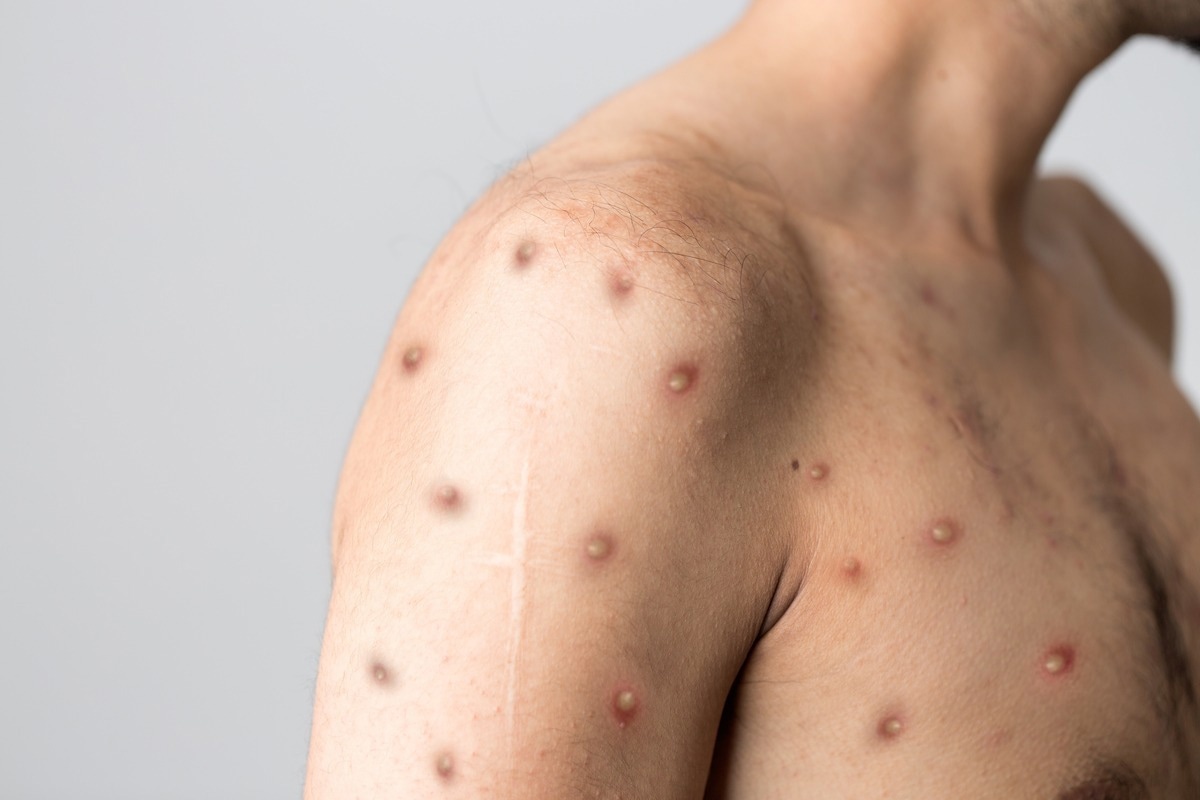In a recent case report posted to the Research Square* preprint server, researchers described the symptomatology and clinical manifestations of monkeypox infections among two Israeli patients.

About the case report
The authors of the present report described monkeypox infections among two Israeli men aged 30 to 40 years who had sex with men (MSM). None of the patients were vaccinated for smallpox, and neither received antiviral therapy for monkeypox.
Case 1
The patient had normal body weight [indicated by body mass index (BMI) values], and history of hemorrhoids and condyloma acuminatum one year before the current monkeypox infection, and had received human papillomavirus (HPV) vaccination. The final HPV vaccine was administered one month before the current infection. In addition, he had been infected with severe acute respiratory syndrome coronavirus disease 2 (SARS-CoV-2) once despite being vaccinated twice for the same one year prior to the coronavirus disease 2019 (COVID-19) diagnosis.
On day 1, the patient reported a sensation of altered perianal skin texture without any visible skin lesions. On day 2, mild fever (37.5° C), fatigue, and muscle aches were reported. He had unprotected sex with his male partner till one day before the onset of symptoms. The partner had confirmed monkeypox infection several days before patient 1 and had unprotected sex with a European traveler. After being diagnosed with monkeypox infection, the patient was self-quarantined. On day 3, he presented with increased body temperature (38°C), chills, severe headaches, and tender right and left inguinal lymph nodes.
In addition, painless, raised, and serous papules were reported in the anal region and perianal region. Monkeypox infection was suspected, so the patient was referred for emergency care. All vital signs except body temperature were within the reference range, and new lesions were not reported. Nasopharyngeal and anal swabs were obtained from the patient for polymerase chain reaction (PCR) analysis, based on which the patient was diagnosed with monkeypox infection.
Laboratory tests, including biochemistry parameters such as liver function tests, electrolytes and creatinine, and complete blood count were performed. The patient had a mild increase in neutrophil count (6 10e3/µL), elevated C-reactive protein (93.4 mg\L), and alanine transaminase (64 U/L) levels and received hospital discharge with prescription of topical antibiotics prescribed and advised for sexually transmitted disease panel testing.
On day 4 of monkeypox infection, 10 pruritic pustular lesions were identified with an additional solitary papule in the mouth commissure. On day 5, the patient presented with lymphadenopathy, severe pain in the inguinal region, with additional lesions in the buttocks, anal region, and perianal region with umbilication in the center. In addition, elevated erythematous patches over the extremities, trunk, and neck were also detected. He was prescribed creams for topical application, antihistamines, and analgesics.
On day 6, the red patches transformed into umbilicated and painless papules restricted to the upper extremities and the trunk. On day 7, the patient presented with pruritis vesicular lesions in the anal region with severe dyschezia and pain, for which he sought emergency care once again. The laboratory test reports were similar to the earlier reports, and the patient received discharge with medication comprising paracetamol and oxycodone. On the eighth day of infection, the body temperature returned to normal, the pain and lymphadenopathy subsided, and crusting of lesions on the anal and perianal areas was observed with persistent pruritis. The patient was highly anxious due to rapid clinical alterations and the uncertain duration of infection.
Case 2
A male patient suffering from human immunodeficiency virus (HIV) acquired immunodeficiency syndrome (AIDS), treated with combination therapy comprising dolutegravir, lamivudine and abacavir, and CD4 + T lymphocyte count of >500 lymphocytes/mm3 presented with suspected monkeypox infection. He also received apixaban medication after an event of venous thromboembolism.
The patient’s BMI was normal, and he had a condyloma acuminatum history and had received HPV vaccination, the final dose of which was received several weeks before the current infection. He initially presented with dysuria, malaise, pruritis in the penile region, and enlarged unilateral inguinal lymph nodes. Symptom onset was reported 14 days after unprotected sex with a European traveler.
On day 3, a solitary lesion with umbilication in the center was detected on the penis, and 10 lesions were detected on the following day. Two days later, the patient presented with enlarged cervical lymph nodes and 10 penile pustular lesions with papules spreading to non-genital regions of the body, although vitals, urine analysis, and biochemistry test reports were normal.
By day 8, the lesions in the penis appeared to be vesicular, and the bodily papules were more numerous throughout the body; however, the face was spared. By the tenth day of infection, crusted lesions were observed, and some lesions disappeared three days later. Even though the patient showed symptomatic improvement, the diagnosis of monkeypox infection made him anxious.
Conclusion
The authors believe that no case report before the present one described the clinical presentation of monkeypox infections in Israel and is also among the initial reports of the infection among developed nations. Both cases had atypical clinical presentations with asynchronous lesions on the trunk, extremities, genital and anal regions; however, the clinical presentations were similar to those of sporadic cases observed in Australia and Italy.
The report underpins the need to lower the suspicion threshold of monkeypox infections and increase awareness and testing for monkeypox infections. In addition, health measures must be developed to minimize monkeypox virus transmission but also to address the anxiety and stress of gay men.
*Important notice
Research Square publishes preliminary scientific reports that are not peer-reviewed and, therefore, should not be regarded as conclusive, guide clinical practice/health-related behavior, or treated as established information.
https://news.google.com/__i/rss/rd/articles/CBMicWh0dHBzOi8vd3d3Lm5ld3MtbWVkaWNhbC5uZXQvbmV3cy8yMDIyMDcxMi9DbGluaWNhbC1wcmVzZW50YXRpb24tb2YtbW9ua2V5cG94LWluZmVjdGlvbi1pbi10d28tSXNyYWVsaS1tYWxlcy5hc3B40gEA?oc=5
2022-07-12 09:24:00Z
1492367907
Bagikan Berita Ini














0 Response to "Clinical presentation of monkeypox infection in two Israeli males - News-Medical.Net"
Post a Comment